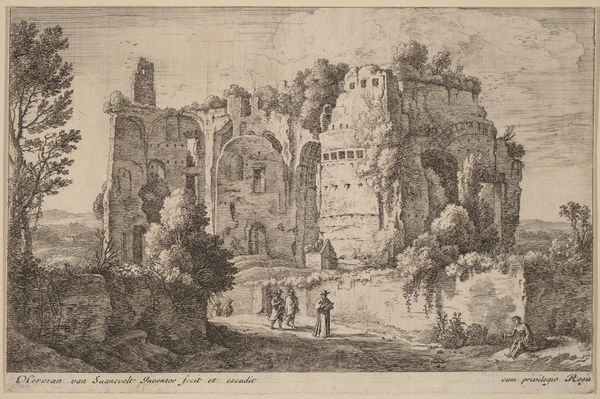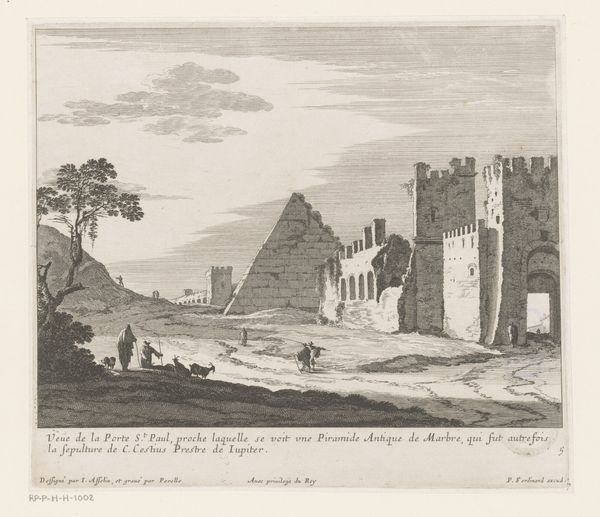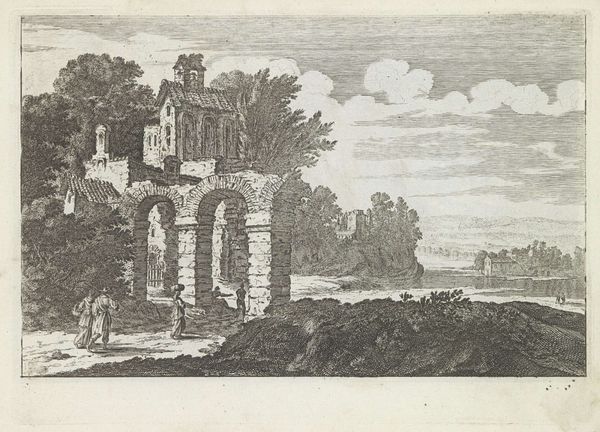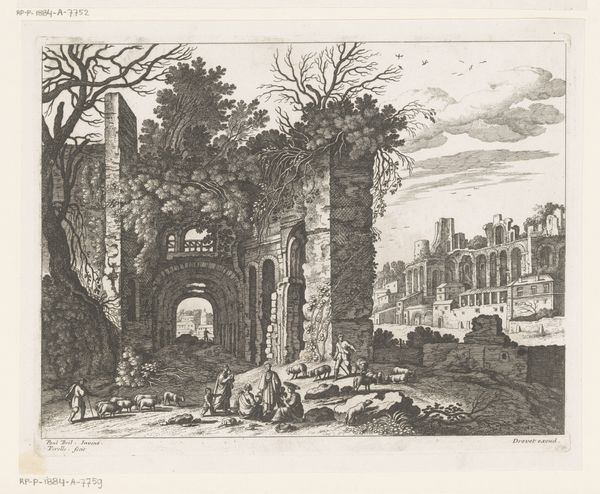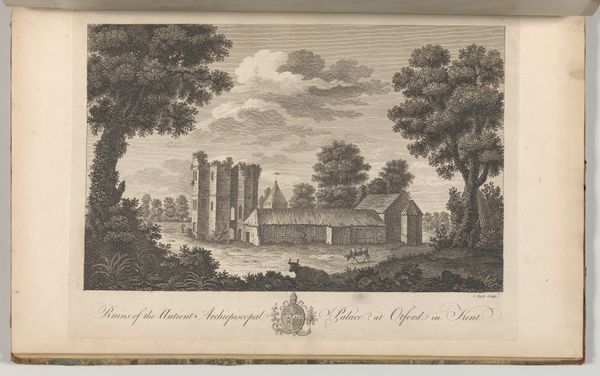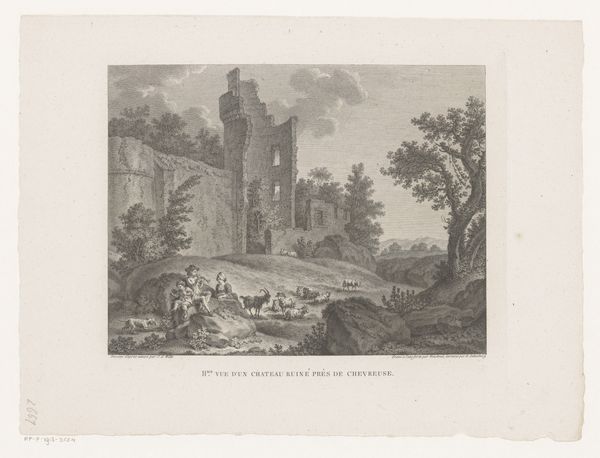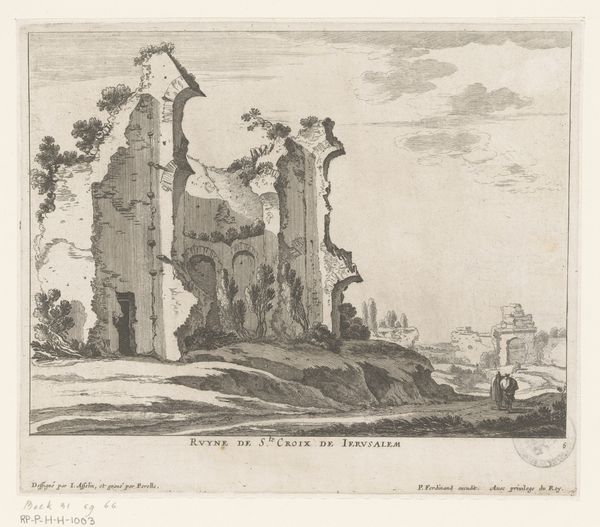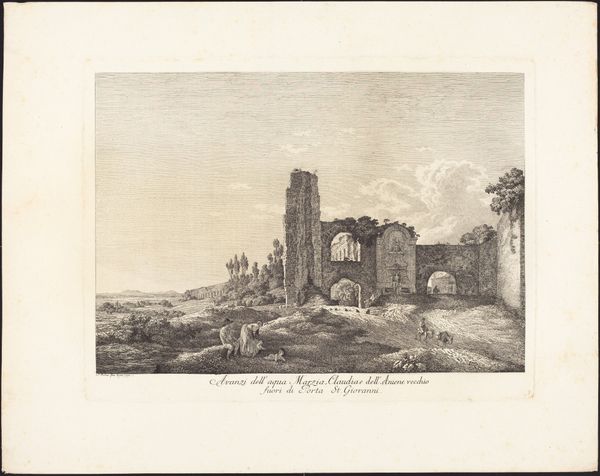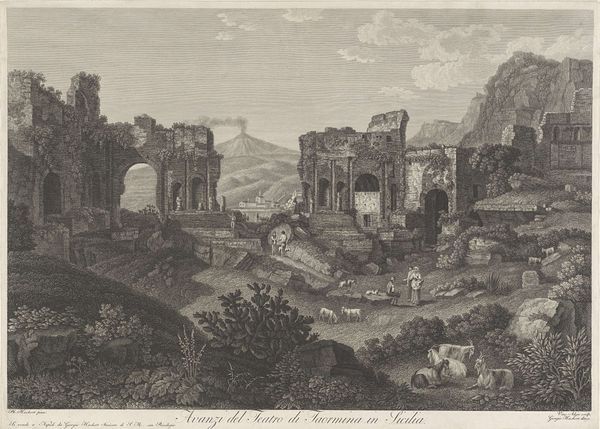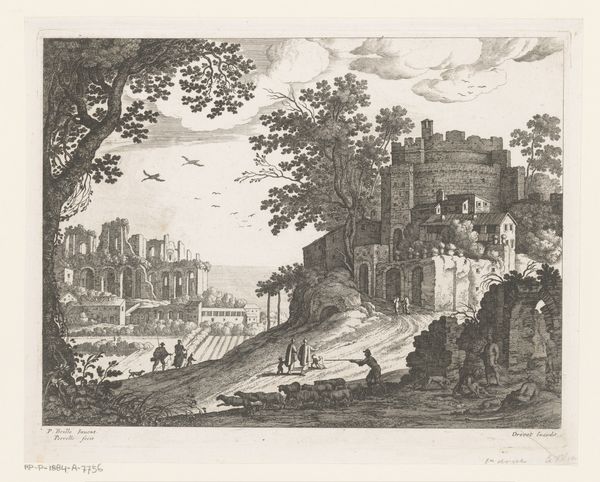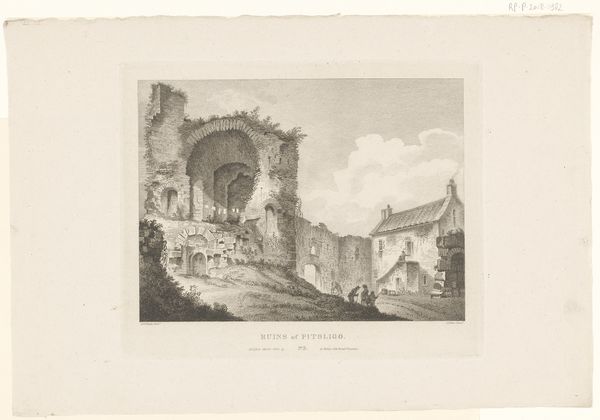
#
pencil drawn
#
amateur sketch
#
toned paper
#
light pencil work
#
pencil sketch
#
charcoal drawing
#
charcoal art
#
pencil drawing
#
pen-ink sketch
#
pencil work
Dimensions: height 253 mm, width 356 mm
Copyright: Rijks Museum: Open Domain
Richard Houston etched this ruinous landscape sometime in the 1700s. Dominating the scene are the crumbling remains of grand structures. These ruins, draped in vegetation, evoke a sense of the passage of time and the transience of human achievement. We find this motif of ruins throughout art history, from Piranesi's dramatic engravings of Roman antiquities to the Romantic landscapes of Caspar David Friedrich. Houston’s ruins are not merely architectural remains but symbols of mortality and reflection. They recall the cyclical nature of history and the inevitable decay of even the most formidable creations. Observe the solitary figures amidst the ruins, echoing the Romantic theme of humanity dwarfed by the forces of nature and time. This juxtaposition engages our collective memory, tapping into a deep-seated awareness of our own fleeting existence. Consider how the emotional weight of such imagery has been passed down, evolving from the memento mori of earlier eras to a more generalized contemplation on the impermanence of life.
Comments
No comments
Be the first to comment and join the conversation on the ultimate creative platform.
